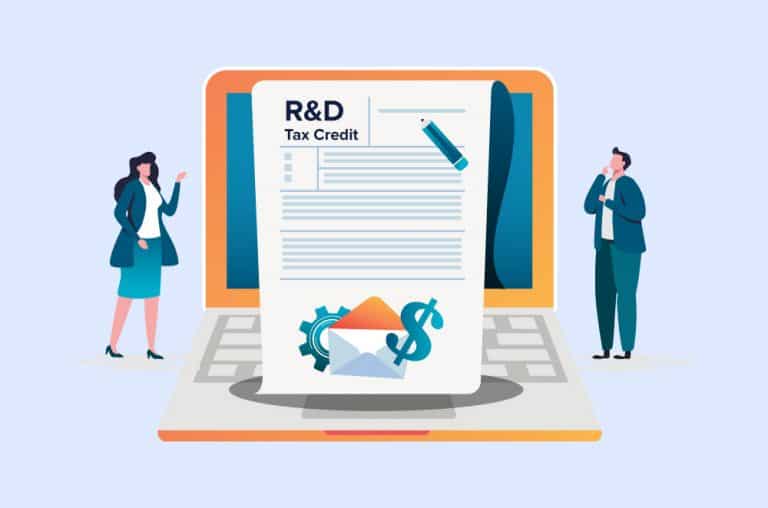The Research and Development (R&D) Tax Credit happens to be one of the best ways for businesses to considerably reduce their tax liability. Thanks to several modifications over the years, more companies can benefit from this tax incentive.
Contents
R&D Tax Credit
The R&D Tax credit is, fundamentally, a government-sponsored tax incentive that rewards companies for carrying out research and development in the United States.
This tax credit was enforced to catalyze innovation throughout the economy and to keep technical jobs.
Most businesses are not aware that the R&D tax credit applies to companies of all sizes. Small and mid-sized companies that rely on growth marketing can also avail of the R&D tax credit should they meet the required criteria.
Now, due to numerous modifications and expansions over the years, more companies than ever before can benefit from this valuable incentive.
You qualify for an R&D tax credit in the following cases:
- If your company develops or designs new products or processes
- If your company enhances the existing products or processes
- If your company develops prototypes or improves the current prototypes and software
How do I claim my R&D Tax Credit?
To claim the R&D tax credit, you need to evaluate and document your research activities to establish the research expenses paid for each qualified research activity.
As a taxpayer, you cannot afford to make assumptions about your expenses. You need to have factual information to create estimates.
The following documents can be used:
- Payroll records
- General ledger expense detail
- Project lists
- Project notes
You can use these records along with a credible employee testimony to form the basis for your R&D Tax Credit claim. The following expenses qualify for R&D tax credits:
- Subcontractors and freelancers
- Payments made to the subjects of clinical trials
- Staff, salaries, employer’s NIC, pension contributions, as well as reimbursed expenses
- Materials and consumables such as heat, light, and electricity that are utilized during research and development
- Different types of software
Which R&D Tax Credit Scheme works for my Company
The scheme that you use to make an R&D tax credit claim will primarily depend on the size of your company.
Small and Medium-sized Enterprises (SME)
SMEs have less than 500 staff members and have a turnover of not more than €100 million or €86 million in gross assets. Most companies, including start-ups, come under this label.
If you are an SME for R&D tax credit purposes, you will have to make a claim through the SME R&D tax credit scheme.
Large company
Large companies have 500 staff members or more, and either have a turnover that exceeds €100 million or €86 million in gross assets. If you happen to be a large company, you will have to make a claim via the Research and Development Expenditure Credit (RDEC).
Sometimes you have grants and subcontracting that can restrict an SME from making a claim through the SME scheme. In such a case, you may have to do it via RDEC – or via both schemes.
Benefits of R&D Tax Credit
Here are some benefits of the R&D Tax Credit:
- You may get a dollar-for-dollar reduction in your federal and state income tax liability
- An increase in the earnings-per-share
- The reduction of your effective tax rate
- Improvement of cash flow
Filling out the IRS form 6765
You need to fill out form 6765 to calculate your R&D tax credit
The IRS Form 6765 comprises 4 sections (A, B, C, D) that you need to fill out according to the nature of your business to estimate your total research expenses.
You can choose to claim the regular credit in section A, or you can select the alternative simplified credit (ASC) in Section B. The IRS suggests you use both methods to make your calculations and then fill out the one that yields you the most credit.
Keep in mind that if you decide to apply for the alternative simplified credit (ASC), it will apply to your current year and the forthcoming years. You cannot change this.
Section A
You need to fill this section to meet all the eligibility requirements and claim the regular R&D tax credit. While filling out the IRS form 6765 can be complicated, you can do it by following the instructions given to you by the IRS.
Section B
The Alternative Simplified Credit (ASC) enables you to calculate the available R&D tax credits differently.
The ASC tends to be more flexible with many businesses. It allows them to claim their credit even when their current year’s expenses do not meet the regular credit calculation limit.
You may complete this section and attach the completed IRS form to your timely filed original return for the tax year.
Section C
After calculating your business’ current year tax credit, you may fill out section C of the IRS form 6765 to identify additional forms and the schedules that warrant reporting based on the structure of your business. Although many taxpayers can ignore section C, it is vital to consult with an R&D tax credit professional to find out if you ought to fill out this section.
Section D
The only time you need to complete this section is if you are making the payroll tax election for your small business.

